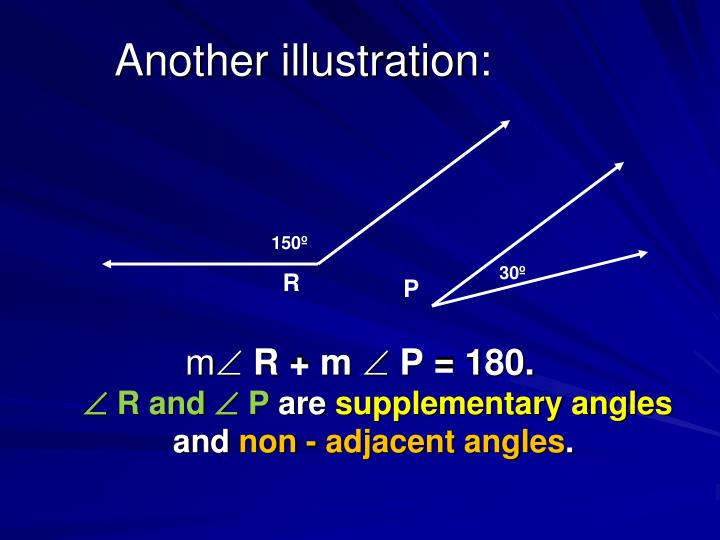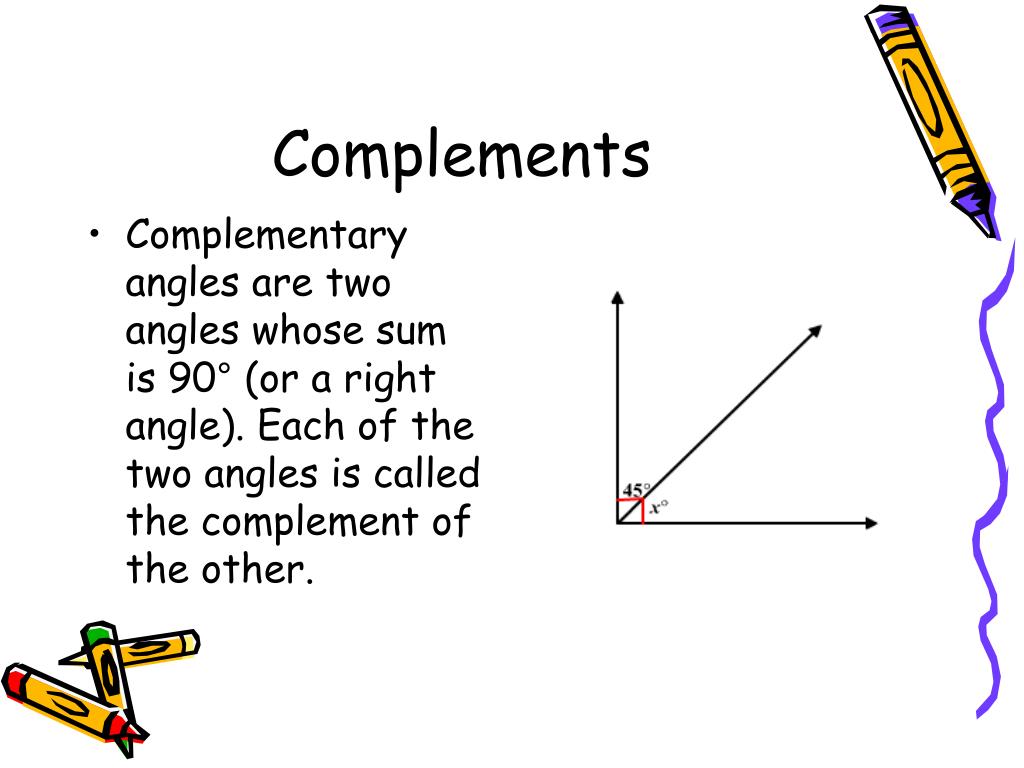
So to find m ∠2, subtract m ∠1 from 180 o. Angles 1 and 2 form a linear pair and are supplementary. Vertical angles are congruent, so m ∠2 = 112 o.ġ8. This means that there are no other congruent supplementary angles other than the pair of right angles. The pair of angles must have equal angle measures and at the same time, add up to 180, hence the name of the angle. m ∠9 = 126 o m ∠10 = 54 o m ∠11 = 126 oĦ. Congruent supplementary angles are angles that have angle measures of 90 each.

A student designed the stationery border shown here. Find the angle measures in the weaving if m∠1 = 122. įind the value of the variable and the angle measures.ġ7. M∠2 = 68, because vertical angles add up to 180. Two lines that intersect to form a right angle are called _?_.Īre the angles are complementary, supplementary, or neither?ĭescribe and correct the error in the solution. The sum of the measures of two _ ?_ angles is 180. M∠5 + 125 = 180 Definition of supplementary anglesġ1. The angle with measure 125 and ∠5 are supplementary. ∠1 and ∠5 are corresponding angles, so they have equal measures.įind m∠5. Without points, you couldnt make lines, planes, angles, or polygons. What is a Point A point is a fundamental building block of math. When a line intersects two parallel lines, several pairs of angles that are formed have equal measures.Ĭorresponding Angles: m∠1 = m∠5 m∠2 = m∠6 Īlternate Interior Angles: m∠3 = m∠6 m∠4 = m∠5Īlternate Exterior Angles: m∠1 = m∠8 m∠2 = m∠7 definition angle angles supplementary supplementary angles straight angle straight angles add angles 180 180 degrees Background Tutorials. Firstly, the main difference in the definition is that complementary angles form an angle that measures 90 degrees, and the sum of supplementary angles is 180 degrees. Two lines in the same plane that do not intersect are called parallel lines. Let’s make a comparison of these two types of angles. Two lines that intersect at a right angle are called perpendicular lines.įind the measures of the numbered angles. When two lines intersect to form one right angle, they form four right angles. M∠1 + m∠2 = 180 Definition of supplementary angles These pairs are called vertical angles, and they always have the same measure. When two lines intersect at a point, they form two pairs of angles that do not share a side. M∠1 + m∠ 2 = 90 Definition of complementary anglesĪre ∠1 and ∠2 are complementary, supplementary, or neither ?

∠1 and ∠2 are complementary, and m∠2 = 32. You can write "the measure of angle 1" as m∠1. Two angles are complementary if the sum of their measures is 90.

Two angles are supplementary if the sum of their measures is 180.


 0 kommentar(er)
0 kommentar(er)
